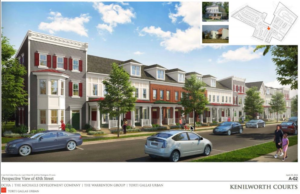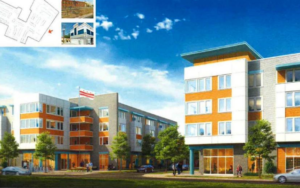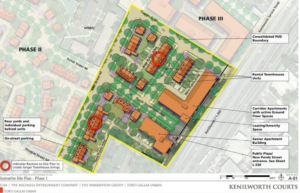Rethinking Public Housing Redevelopments
Public housing developments have often in the past been built in locations with poor accessibility, safety concerns, or other negative factors. Whether it has environmental obstacles such as being placed in a flood zone or accessibility problems where tenants have no affordable transportation nearby, one of the obstacles that often remains constant in these developments is the lack of access to healthy and affordable food, or what we researchers call a “food desert.” Despite the name, food deserts often happen in urban areas like the District of Columbia because of the lack of affordability, and with about 10% of households in the District having an annual income less than $10,000, it’s no surprise when the issue of convenient, affordable food arises[1]. Food deserts occur most often when poor food access is coupled with socioeconomically restrictive patterns of development, which is the case for much of the older public housing units in the city.
Recently, D.C. developers are rethinking the old pattern of isolated public housing developments and improving the way they are designed. This past Monday after sixteen months of meetings and legal proceedings, the D.C. Zoning Commission finally approved a 17 acre redevelopment plan near the Deanwood Metro station in Northeast. This planned-unit development, called Kenilworth Courts, will be developed by a team that includes The D.C. Housing Authority, The Warrenton Group, New Jersey’s Michaels Development Company, and local architecture firm Torti Gallas.
Currently, the site consists of multiple half-century old buildings totaling 290 outdated units. After this team of developers is done, however, there will be 530 new units tailored to a range of incomes. The units themselves will include townhouses and 1-5 bedroom apartments, and the buildings will look similar to the renderings below[2].
This public housing site currently faces obstacles, as previously mentioned. Since the development of this area over fifty years ago, the public housing units have been isolated by environmental and manmade factors. The neighborhood is bounded by Kenilworth Avenue to the east, the D.C.-Maryland border and a wastewater treatment plant to the north, and Kenilworth Park and the Anacostia River to the west. The developers are planning to completely redesign the area, reconfigure the street plan, and address these restrictive factors. With the new PUD, not only are the developers promising a one-for-one replacement of public housing units, but they are also planning to implement a grocery store or food cooperative which will help solve the neighborhood’s food desert problem. The closest grocery store is two miles away which, for someone without a car, is not readily accessible.
Ward 7, the area in which this development is located, has one of the city’s highest poverty rates as well as the city’s highest obesity rates – both outcomes of the neighborhood’s food desert[3] status. Of the city’s 43 full-service grocery stores, only four are located in Ward 7. The developers are not only giving the residents of Kenilworth Courts a new affordable grocery store, but they are also making proffers that include car-sharing memberships, three-year memberships to Capital Bikeshare, and a $50 Metro fare card. By rethinking the obstacles that public housing developments run into on a regular basis, they will be building a profitable mixed-income development that serves a diverse variety of people while also addressing and solving the neighborhood’s current food desert issue, associated health problems, and lack of accessibility.
[1] United States Census Bureau. American Factfinder: 2015 ACS 5-Year Estimates.
[2] Goff, Karen. Here’s How Developers, D.C. Will Breathe New Life into Isolated Public Housing. (December, 2016). Retrieved from http://www.bizjournals.com/washington/news/2016/12/13/heres-how-developers-d-c-will-breathe-new-life.html.
[3] D.C. Hunger Solutions. Facts on Hunger in D.C. (2016). Retrieved from http://www.dchunger.org/about/facts.html.


